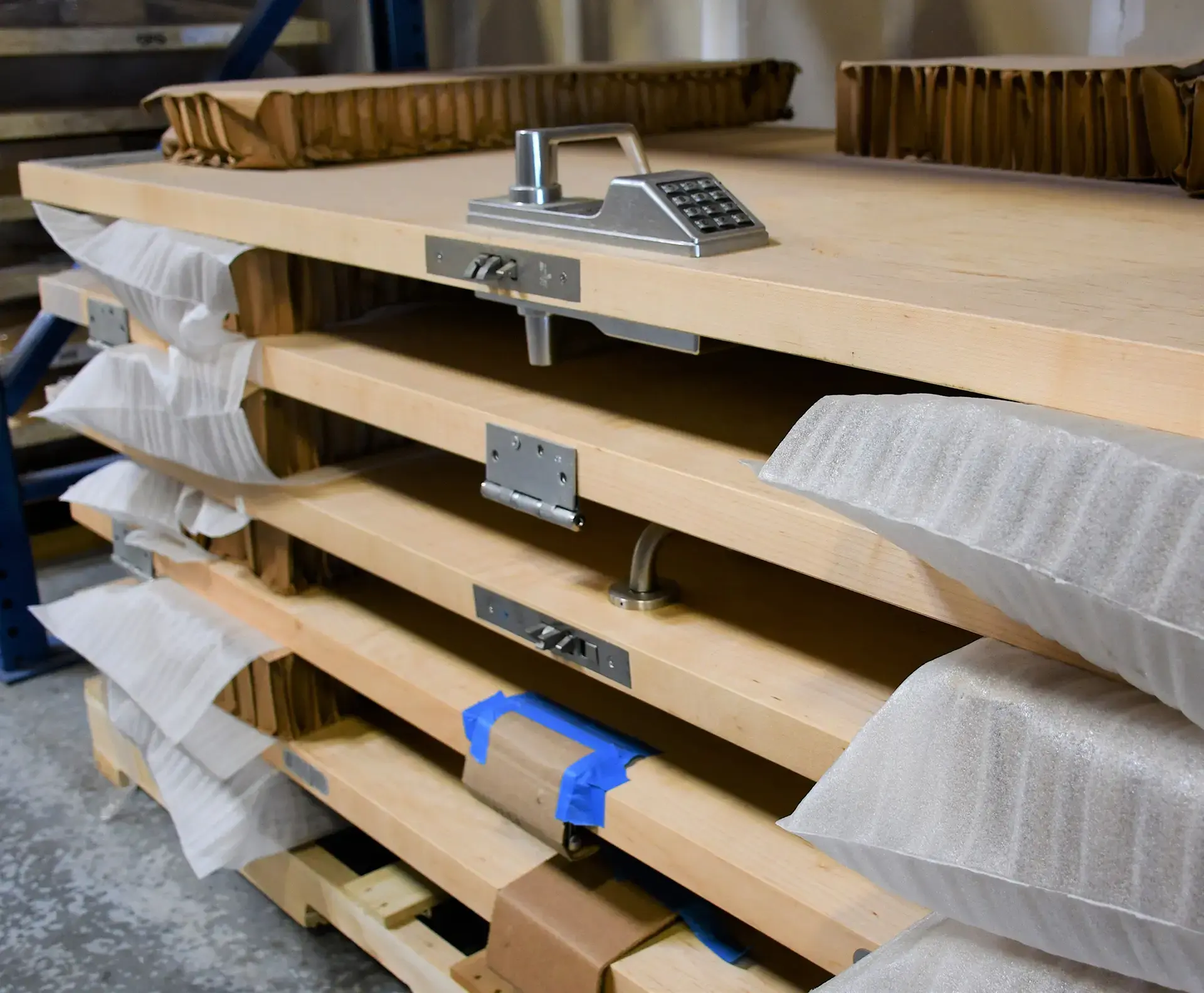As the end of your construction project approaches after months of deadlines and stress, the final walk-through is all that stands between you and completion. You might think the stress is finally lifting, but in reality, there are crucial details still to address.
Neglecting these five crucial factors could lead to persistent security and maintenance complications with your doors.
- – Ensure Proper Installation of Aluminum Storefront Hardware and Cylinders
It is common for aluminum doors to have pre-installed hardware. It is important to verify that the specified hardware is installed. Otherwise, the doors may not function as designed. This can also be a problem if the project has interchangeable cores. The default cylinders supplied for the aluminum doors will not be compatible with the permanent cores. Meaning the final keys will not work these cylinders.
How to verify the correct hardware is installed:
Look for physical manufacturer marks on the hardware and compare it to the specified hardware. Interchangeable core cylinders will have cores with a figure eight design. - – Permanent cores have been properly installed.
Most projects will be provided with construction cores. Construction cores are designed to provide security during the construction phase. Once the construction is complete, the permanent cores should be installed. If construction cores remain, the security of the opening will be compromised. Correcting it after the fact may need a special key to remove the core, a new permanent core, or a locksmith to drill out the construction core.
How to verify the permanent cores are installed:
Check the cylinder operation with the final keys. If you do not have the keys, construction cores will be painted, while permanent cores will match the architectural finish of the cylinders. - – Proper Function of Electronic Hardware
Openings with electrified hardware have a specific mode of operation. These openings may restrict access or interface with the fire or burglar alarms. Installation issues can prevent the proper function.
How to verify the function of doors with electronic hardware:
Make sure all hardware is correctly installed, and the door functions according to the designed mode of operation. If it has a keypad lock, verify that it is programmed correctly. If it has an alarmed panic device, verify that it is installed correctly. Also, ensure the latch bolt cannot be manipulated by hand and that the battery is properly installed. All issues must be addressed while the general contractor and electrician are both still on-site to troubleshoot any problems. - – Proper Swing and Adjustment of the Door
When installed correctly and not abused, a typical opening can outlive the life of a building. However, a door that drags the floor, does not fit correctly in the frame, or is prone to flying open or slamming shut, will cause maintenance issues for the door. Correct installation means the frame is plumb and square, that the correct hardware has been used, and the door has a free, easy, controlled, swing.
Checking the swing of a door and closer adjustment:
Swing the door from closed position to open position and verify there is no interference. It should come to a resting position against the top of the frame. When looking at the door in a closed position, the door should have consistent clearance gaps around the door. The hinges may need to be shimmed for proper adjustment. The undercut of the door should allow it to swing without any flooring interference. - – Proper Closer Adjustment
In addition to closing the door, a closer helps control the door. When properly adjusted a closer will cushion the door at the maximum degree of swing, slow the door before it slams, and provide enough final closing force to latch the hardware. A closer must be adjusted to the above while staying within ADA regulations.
Note: Closers should be re-adjusted once the building has reached final pressurization.
Checking closer adjustment:
When a closer is used, it should be properly adjusted to stay under the maximum allowable opening force required (2010 ADA Standards = 5 lbs of force), while maintaining a minimum 5-second closing time (from 90 degrees to 12 degrees). It is also crucial for security and fire ratings (when applicable) that the door latches. Once the door has come to a close, push the door without using the lever to verify it latched. If it does not latch on its own, the closer will need adjustment.
Over years of experience and thousands of projects, these are some of the common issues we have found. These are areas where spending a few minutes per door during the walk-through can save hours down the road.




